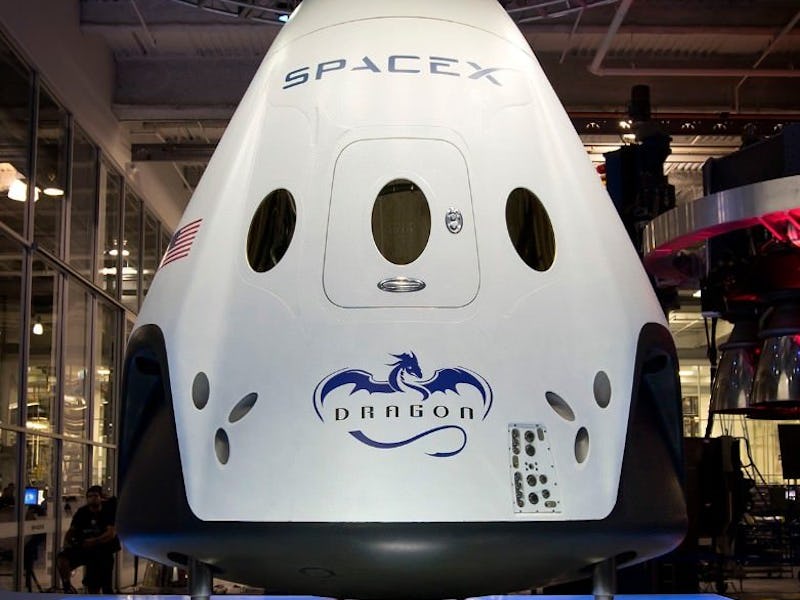SpaceX has hit a snag in its plan to send humans into space. The company’s Crew Dragon capsule, expected to ferry NASA astronauts to and from the International Space Station later this year, suffered a severe anomaly during tests on Saturday. A video of the incident was widely shared over social media.
NASASpaceFlight explained that the test was meant to focus on a series of stages. The first stage would involve firing the Draco thrusters, used for maneuvering, in two tests before firing the SuperDraco thrusters designed for in-flight abort tests around an hour later.
“Earlier today, SpaceX conducted a series of engine tests on a Crew Dragon test vehicle on our test stand at Landing Zone 1 in Cape Canaveral, Florida,” the company told the publication in a statement. “The initial tests completed successfully but the final test resulted in an anomaly on the test stand.”
In his response to the issue, NASA administrator Jim Bridenstine noted that such events were exactly why these tests are conducted.
“The NASA and SpaceX teams are assessing the anomaly that occurred today during a part of the Dragon Super Draco Static Fire Test at SpaceX Landing Zone 1 in Florida,” Bridenstine wrote on his Twitter page. “This is why we test. We will learn, make the necessary adjustments and safely move forward with our Commercial Crew Program.”
Footage of the incident went viral on Twitter, receiving nearly 300,000 views at the time of writing:
The capsule is a key aspect of NASA’s future plans for the space station. The Crew Dragon, along with Boeing’s CST-100, is part of the Commercial Crew Program aimed at developing a new means of ferrying astronauts to the orbiting research facility. Since NASA cut the shuttle program in 2011 it has been buying seats at around $80 million each on Russian Soyuz rockets for liftoff from Kazakhstan. The program offers the chance to bring flights closer to NASA’s base of operations.
SpaceX made a decisive step forward in these plans when it completed the “Demo-1” launch last month. The capsule sent up 400 pounds of cargo to the station, including a dummy called “Ripley” fitted with sensors to help understand how humans may react in the capsule. The capsule splashed down in the Atlantic Ocean six days later, returning with research samples. It was the first commercially-built craft for humans that launched and docked to the International Space Station autonomously.
The in-flight abort test, scheduled to take place before the manned “Demo-2” launch, is expected to test the capsule’s ability to fire its eight SuperDraco thrusters and get away from the Falcon 9 rocket during a failed launch. The failure ahead of the SuperDraco tests on Saturday has led to SpaceX investigating the issue.
“Ensuring that our systems meet rigorous safety standards and detecting anomalies like this prior to flight are the main reasons why we test,” the company said in its statement. “Our teams are investigating and working closely with our NASA partners.”
After SpaceX completes its abort test, former Marine Corps colonel Douglas Hurley, and former Air Force colonel Robert Behnken will take part on the “Demo-2” flight. This was previously listed as set for July 2019, but earlier this month NASA noted that it expects to revise these dates in the next couple of weeks.
If SpaceX can successfully resolve the issues and complete its tests, it could spark a new era for astronaut travel and scientific research.
